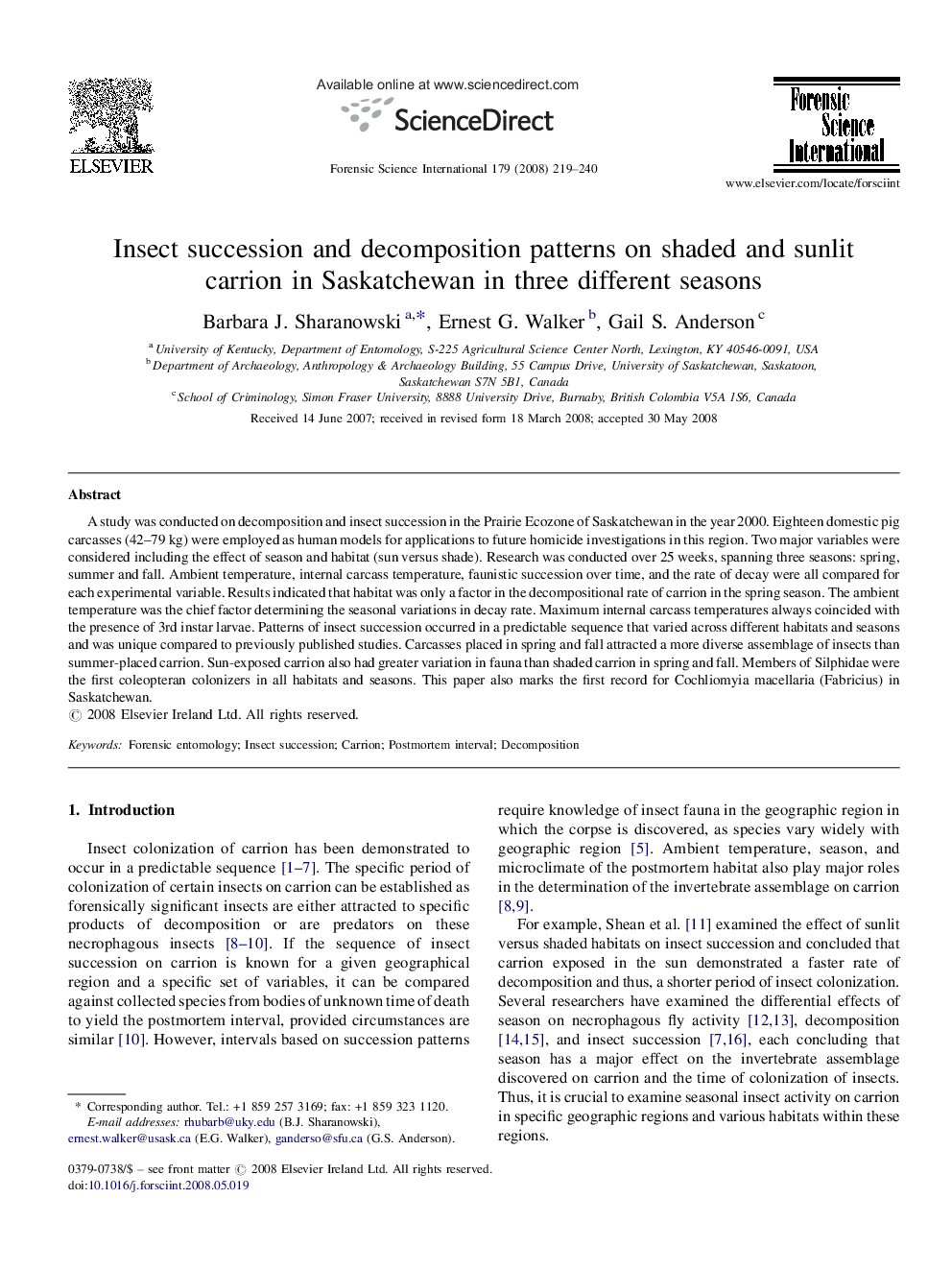| Article ID | Journal | Published Year | Pages | File Type |
|---|---|---|---|---|
| 97622 | Forensic Science International | 2008 | 22 Pages |
A study was conducted on decomposition and insect succession in the Prairie Ecozone of Saskatchewan in the year 2000. Eighteen domestic pig carcasses (42–79 kg) were employed as human models for applications to future homicide investigations in this region. Two major variables were considered including the effect of season and habitat (sun versus shade). Research was conducted over 25 weeks, spanning three seasons: spring, summer and fall. Ambient temperature, internal carcass temperature, faunistic succession over time, and the rate of decay were all compared for each experimental variable. Results indicated that habitat was only a factor in the decompositional rate of carrion in the spring season. The ambient temperature was the chief factor determining the seasonal variations in decay rate. Maximum internal carcass temperatures always coincided with the presence of 3rd instar larvae. Patterns of insect succession occurred in a predictable sequence that varied across different habitats and seasons and was unique compared to previously published studies. Carcasses placed in spring and fall attracted a more diverse assemblage of insects than summer-placed carrion. Sun-exposed carrion also had greater variation in fauna than shaded carrion in spring and fall. Members of Silphidae were the first coleopteran colonizers in all habitats and seasons. This paper also marks the first record for Cochliomyia macellaria (Fabricius) in Saskatchewan.
